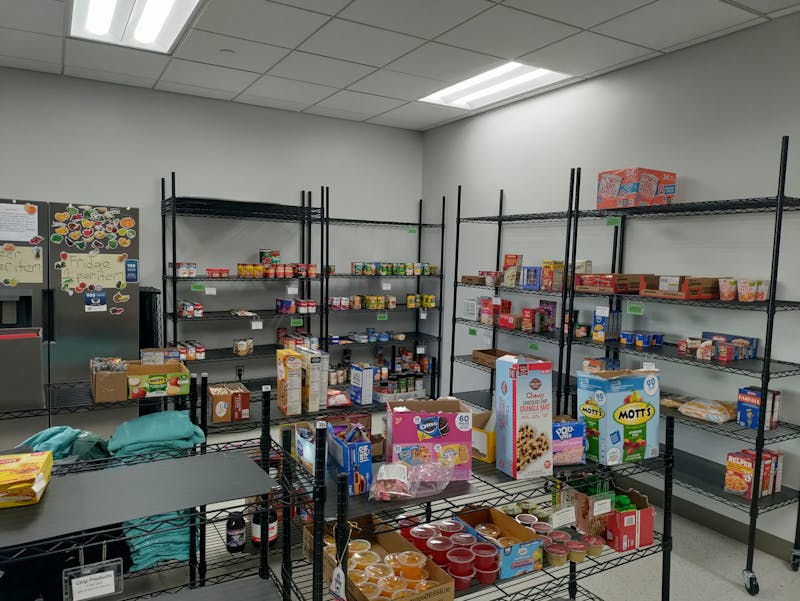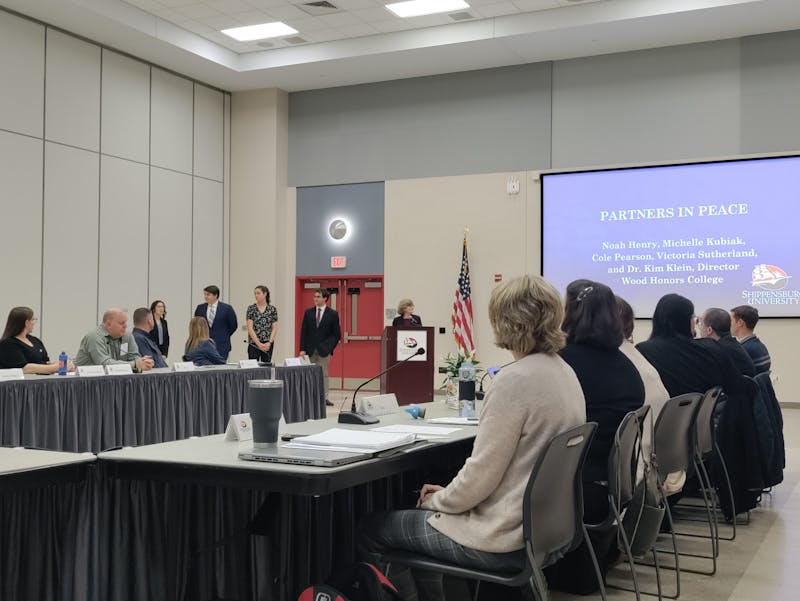History was shown in a different lens during Peter Miele’s “History Where it Happened” lecture at Stewart Hall on Sept. 30.
The discussion revolved around “power of place” and how it can be used to uncover what and how ordinary people thought about the world. This idea can be used to learn more about everyday life, not just the major parts of the world’s history.
Miele noted that being somewhere is not a substitute for doing research, but rather it can inform and inspire different questions and conclusions. That is the impact the “power of place” can have when delving into an area’s history.
Miele said that there is a “perspective and feeling that you can only get by standing where historical figures stood.”
Miele knew he wanted to be a historian since visiting the Lincoln Memorial in February 1998. Years later he studied at Shippensburg University, and Miele talked about “how influential the Applied History Program has been in public history in Central Pennsylvania.” The program was put on by the Pennsylvania State for Preservation Office of Shippensburg and Indiana University.
After Miele moved to Gettysburg, new opportunities arose. He shared how important it is to immerse oneself in a new community and try something new, like public history. He then found an avenue to work at a local museum.
Leading to his arrival at Gettysburg and during that time discovering more about Seminary Ridge, located along Gettysburg National Military Park’s auto tour, they called it the “Ship to Seminary pipeline.” He followed by saying, “I always knew that hiring Shippensburg graduates would be good and I haven’t been proven wrong.”
On his walks to Seminary Ridge, he would pass by the original Lutheran Seminary building and knew it was in the final stages of being rehabilitated. Miele decided he wanted to work there, so he began making connections with the people doing the rehabilitation. He then found himself spending the next 11 years of his life discovering the power of place there.
The Seminary Ridge Museum is the only museum in Gettysburg that is an original building. The developers kept as much of the historical fabric as possible, about 95%, and overlayed a world-class museum exhibit containing original floorboards and mantel pieces.
“That’s what sets us apart, you’re not going to hear that in a new visitor center,” said Miele.
In 2020, Miele connected with the International Coalition of Sites of Conscience, the only global network of historic sites, museums and memory initiative that connects past struggles to today’s movements for human rights. The group guided him to the Susquehanna National Heritage Area, where they were looking to save a historic farm.
The farm was the site of a historic Civil War battle and a documented Underground Railroad station, and it was tied to the work being done at Seminary Ridge. Miele found a job leading the redevelopment of the farm.
“It had everything I was looking for: some fundraising, some project management, certifications and exhibit design, and I was fortunate enough to be chosen to lead the development of this new site,” said Miele.
Miele said the way to provide a powerful story is to talk about people who were fighting injustices and the courage of the freedom seekers. Incorporating stories of the farm being a stop on the Underground Railroad, along with the changes to the farm and innovations the land went through till the current day, creates a lasting story with those who visit the Susquehanna National Heritage Area.
Stories of the people who lived there over time and getting to see original historic structures helps to uncover more about the property. The part that is not always written is crucial to gaining a deeper understanding and insight into what life was like and how it has been adapted over time, according to Miele.



The Slate welcomes thoughtful discussion on all of our stories, but please keep comments civil and on-topic. Read our full guidelines here.